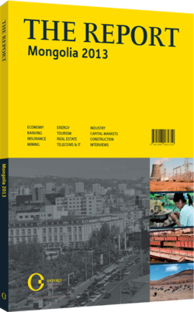This year’s model: Plans to boost internationally accredited, bilingual learning
The Mongolian education system has been in search of a suitable model for many years. Since the collapse of the Soviet Union, the country has tested a number of replacements for the top-down, ideologically based schooling that had been dominant for 60 years. At first, it reintroduced the traditional Mongolian script. It then experimented with the Chinese and Japanese ways of teaching. By 2011, the American and British systems came into vogue, specifically the Cambridge system, according to Mongolian Economy magazine. The search for the right teaching model is very much a part of the country’s search for its own identity and institutions.
BETTING ON CAMBRIDGE: Cambridge International Examinations (CIE), a non-profit department at the University of Cambridge, is a international provider of educational programmes and assessments. It operates in 160 countries and works in partnership with about 30 ministries of education and other official bodies to deliver training, evaluation, quality assurance and assessment. Mongolia is increasingly integrating with the system, and in April 2012 the Ministry of Education and Science signed the Mongolia-Cambridge initiative agreement. The CIE will provide educational services, assist the country with reforms, help bring bilingual education to state schools and harmonise the country’s education system with Cambridge’s standards.
CIE is already active in the country, having helped the government with some reforms and with writing textbooks. This involvement is fast increasing, and as of the 2012 academic year the system was used in a number of Mongolian schools for teaching natural studies, mathematics, physics, chemistry, biology and the English language. The government is aiming for 30 schools under the Cambridge system in three years, and all secondary schools utilising the system by 2015. In the 2017/18 academic year, the government will have its educational system undergo a third-party evaluation by the University of Cambridge itself.
MORE HOURS: Mongolia has already had success in reforming its educational system with respect to English-language teaching. As the country went from 10 years of schooling in the 1990s to 12 years of schooling in 2008, it increased the years of English language instruction from six to eight. Total hours of English lessons rose from 655 to 766. Under the Cambridge system, English-language instruction will jump to 13 years; hours will rise to 1690. The methods and structure of teaching will also change. For example, rather than simply promoting children to higher-level English language classes by grade, under the Cambridge system they advance as their proficiency increases.
The hope is that the closer cooperation with Cambridge will help improve educational content, methodology, curriculum and standards, and assist the system to become more globally competitive. The introduction of the Cambridge model is part of the country’s desire to integrate more fully with the world, and to give Mongolian students a higher chance of being accepted to top universities globally, according to the government.
TRAINING INSTITUTE: The Mongolian government also re-established the Teacher’s Institute for Higher Learning in May 2012. The institute reopened with the help of a MNT6.3bn ($4.8m) grant from Japan. Construction began on the institute, which has five centres for teacher development, two study halls, a conference room for 200, and a Museum of Teacher Development, in 2010. Meanwhile, the opening of the British School of Ulaanbaatar and and the American University of Mongolia, both in 2012, confirm the increase in educational learning in English, in Ulaanbaatar at least.
However, some worry that Mongolia may be missing the real issue. It is not so much the method or the brand that’s important for a modern society, suggests Mongolian Economy magazine, but the relationship between the teacher and the student. The top-down approach remains the rule and is widely considered inappropriate; there should be more interaction within the classroom and an opportunity to develop communications and critical thinking skills. Questions have also been raised regarding the educational models themselves.
You have reached the limit of premium articles you can view for free.
Choose from the options below to purchase print or digital editions of our Reports. You can also purchase a website subscription giving you unlimited access to all of our Reports online for 12 months.
If you have already purchased this Report or have a website subscription, please login to continue.

